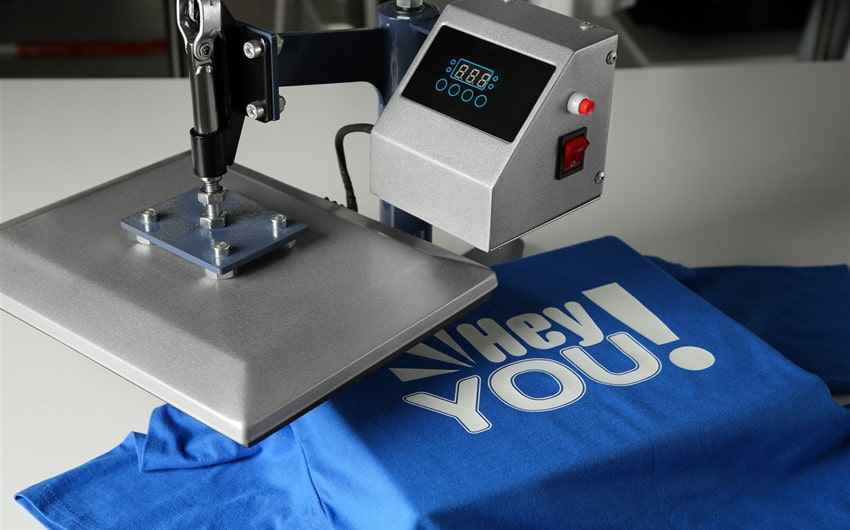When it comes to shirt printing, selecting the right fabric is crucial. The fabric you choose not only influences the final appearance of the shirt but also its durability, comfort, and overall performance. This guide will explore various fabric types, their printing capabilities, and how they can enhance your shirt printing projects. By understanding these factors, you can achieve optimal results that satisfy your customers and elevate your brand.
Understanding Different Fabric Types
Cotton
Cotton is the most popular fabric for shirt printing, and for good reason. Its softness and breathability make it an excellent choice for casual wear. Cotton shirts are comfortable to wear and feel great against the skin, which is a major selling point for customers. Moreover, cotton absorbs ink well, allowing for vibrant prints that stand the test of time.
When considering cotton, look for high-quality options. Ringspun cotton, for instance, is finer and smoother than regular cotton, making it perfect for detailed designs. Additionally, organic cotton is gaining popularity among eco-conscious consumers, offering a sustainable alternative without compromising on quality.
Polyester
Polyester has carved out its niche in the shirt printing market, particularly in the realm of athletic wear. Known for its durability and moisture-wicking properties, polyester is perfect for performance-oriented shirts. When athletes or fitness enthusiasts wear polyester, they benefit from its ability to keep them cool and dry during workouts.
One of the significant advantages of polyester is its compatibility with sublimation printing. This technique infuses the dye into the fabric, resulting in stunning and long-lasting colors that won’t fade or crack. As such, polyester is an excellent option for businesses focusing on sports apparel.
Blends (e.g., Cotton/Polyester)
Blended fabrics, such as cotton-polyester blends, provide a happy medium between comfort and durability. These fabrics combine the softness of cotton with the resilience of polyester, resulting in a shirt that feels great while also standing up to the rigors of everyday wear.
Blends are incredibly versatile, making them suitable for various applications—from promotional events to casual outings. This flexibility means you can cater to a broader audience while maintaining quality and style.
Specialty Fabrics (e.g., Bamboo, Linen)
Specialty fabrics are becoming increasingly popular in the shirt printing industry, particularly for those seeking something unique. Bamboo fabric, for example, is not only soft and breathable but also boasts antibacterial properties, making it a great choice for eco-friendly fashion.
Linen, on the other hand, is perfect for summer shirts due to its lightweight and airy feel. While it may not be as widely used for printing, the natural texture of linen can create a stunning visual appeal. However, certain printing techniques may require special considerations when working with these unique fabrics.
The Impact of Fabric on Printing Techniques
The choice of fabric directly impacts the effectiveness of various printing techniques. Understanding these methods will help you determine which fabric aligns best with your design goals.
Screen Printing
Screen printing is one of the most traditional and widely used methods for shirt printing. It works best on cotton and cotton blends, where the ink sits on top of the fabric, resulting in vibrant colors. However, the texture of the fabric can influence the final print’s appearance. Smooth fabrics yield better results, while coarse textures may result in uneven ink distribution.
When opting for screen printing, ensure you choose high-quality inks that adhere well to your selected fabric. The method’s versatility allows for large batch production, making it an excellent choice for businesses looking to create custom shirts on a larger scale.
Direct-to-Film (DTF) Printing
Direct-to-film (DTF) printing is transforming shirt printing by applying intricate designs onto fabric through a special film and heat transfer. This method works well with various materials, including cotton and polyester, allowing businesses to create custom apparel for diverse customer needs.
The Prestige XL2 large format printer enhances DTF printing by providing exceptional detail and vibrant colors, making it essential for artists and entrepreneurs. When using DTF, consider the fabric’s weight and texture, as these factors impact print quality. By selecting the right materials, you can achieve stunning graphics that remain vibrant over time.
Heat Transfer Printing
Heat transfer printing is another popular method, suitable for a variety of fabrics, including polyester and cotton blends. This technique involves printing the design onto a special transfer paper, which is then applied to the shirt using heat and pressure.
The advantage of heat transfer printing is its ability to produce intricate designs with a range of colors. However, the fabric’s compatibility with the heat transfer process is crucial. Ensure that the fabric can withstand the heat without damage or warping to achieve optimal results.
Fabric Weight and Thread Count: What You Need to Know
When choosing fabric for shirt printing, two important factors to consider are fabric weight and thread count.
Fabric Weight
Fabric weight refers to how heavy or light the fabric is. Lightweight fabrics are great for summer shirts, while heavier fabrics offer warmth and durability. A medium-weight fabric strikes a balance, making it suitable for year-round wear.
The weight of the fabric can also impact how well it holds the print. Heavier fabrics tend to hold up better to frequent washing, ensuring that your designs remain vibrant over time.
Thread Count
Thread count is another significant factor affecting the quality of printed shirts. A higher thread count generally means a smoother fabric surface, which results in clearer and more vibrant prints. When selecting fabrics, aim for a thread count that complements your printing method to ensure the best results.
Considerations for Choosing the Right Fabric
End-Use of the Shirt
Consider the purpose of the shirt when selecting fabric. Casual wear, sports apparel, and corporate uniforms each have unique requirements. Understanding the end-use helps you narrow down fabric choices and printing techniques, ensuring a successful outcome.
Customer Preferences
Your target audience plays a significant role in fabric selection. Some customers prioritize comfort, while others may focus on style or durability. Conducting market research can provide valuable insights into what fabrics resonate with your audience.
Care Instructions and Longevity
Consider the care instructions for each fabric type. Some fabrics may require special washing or drying techniques, which can influence customer satisfaction. Opt for fabrics that are easy to maintain and have a longer lifespan to keep your customers happy.
Conclusion
Choosing the right fabric for shirt printing is an essential step toward achieving optimal results. By understanding different fabric types, their impact on various printing techniques, and factors like fabric weight and thread count, you can make informed decisions that elevate your shirt printing projects.
Whether you’re printing custom designs for a small business or creating promotional apparel, the right fabric will enhance the overall quality and appeal of your shirts. Remember, a well-made shirt not only showcases your designs but also ensures customer satisfaction and loyalty. So, take the time to explore the many options available and select the fabric that best meets your needs for a successful shirt printing venture.







